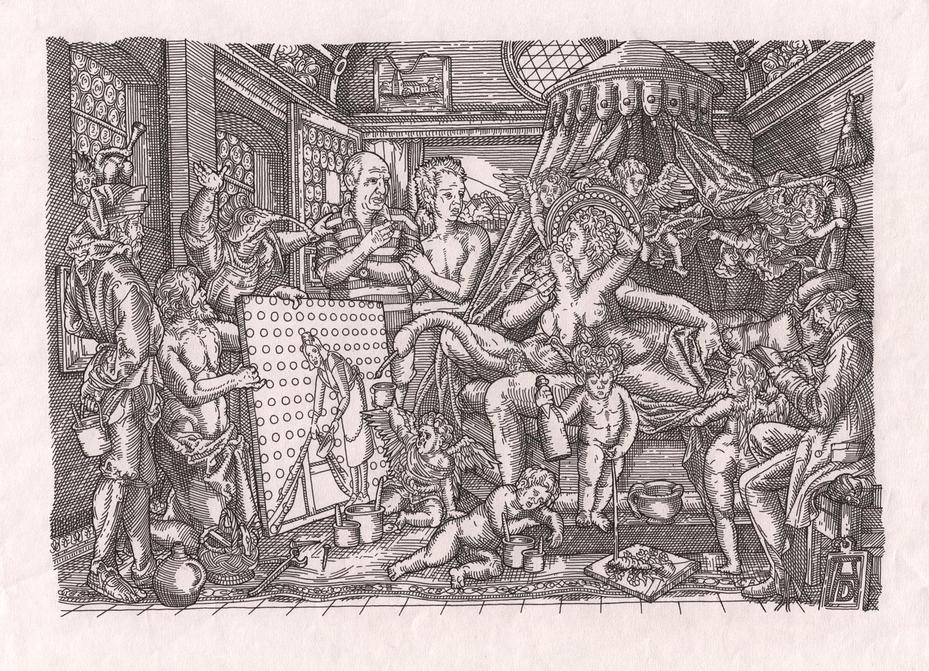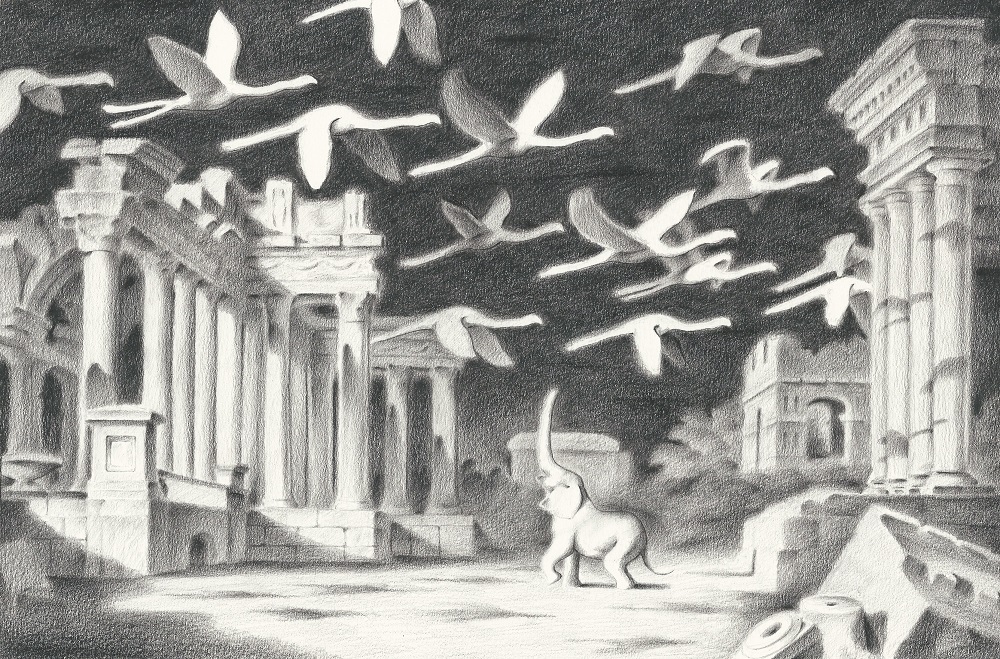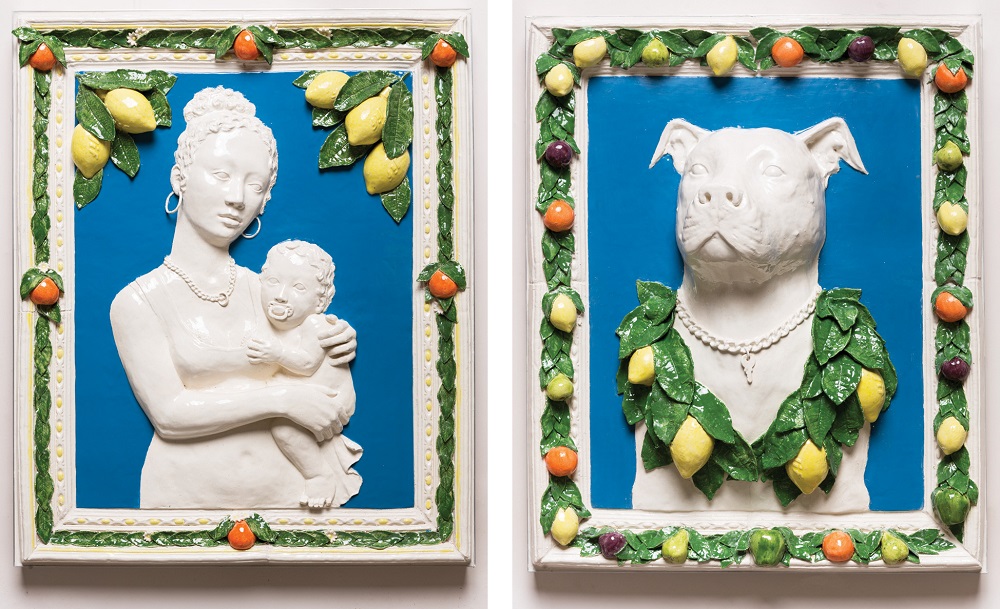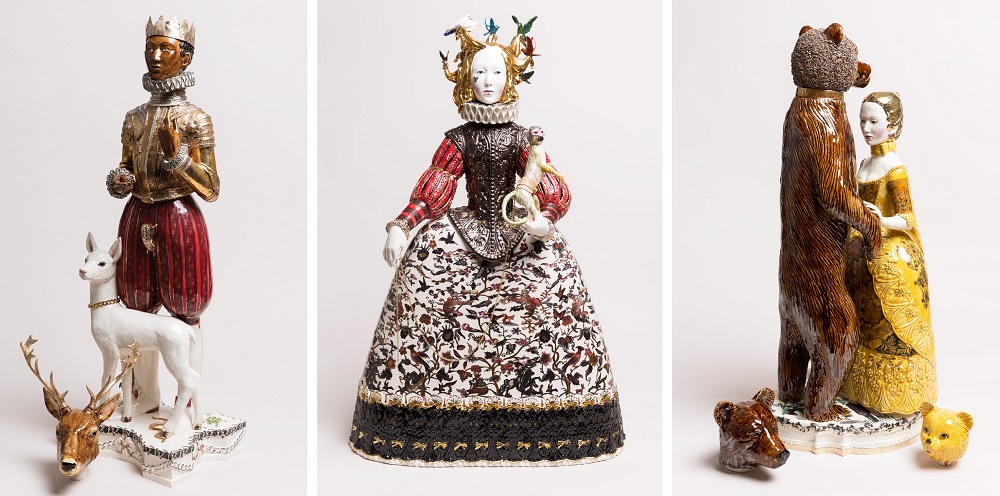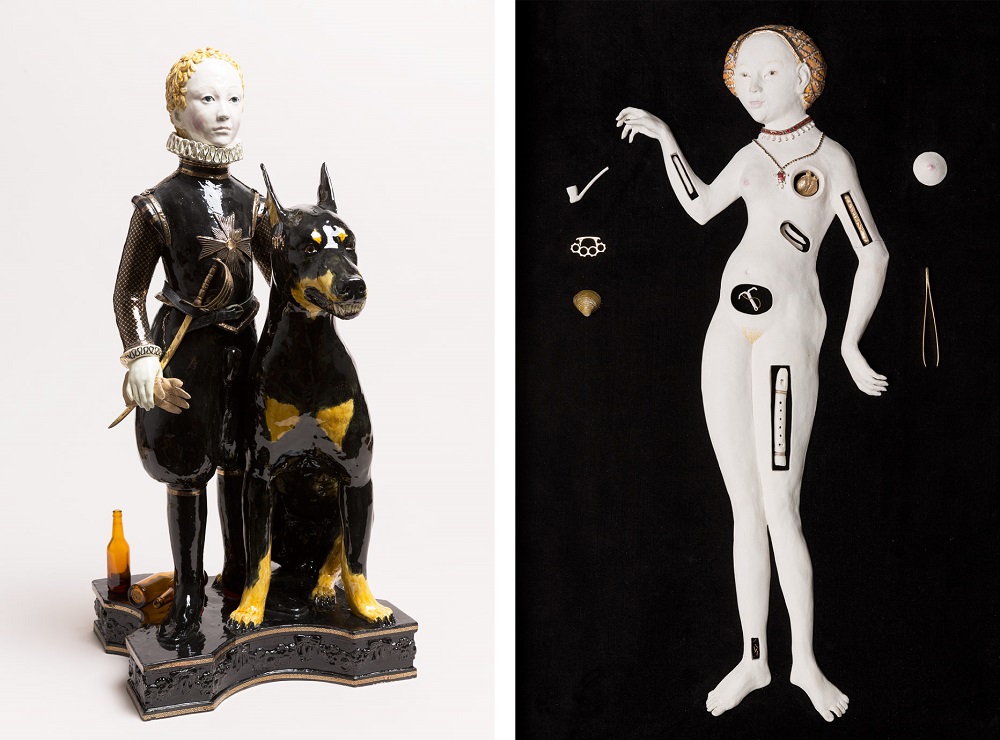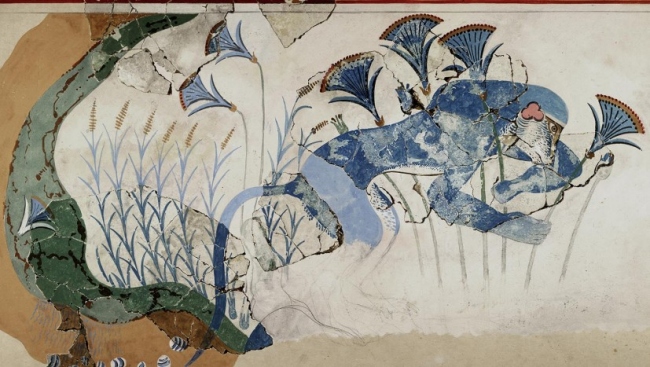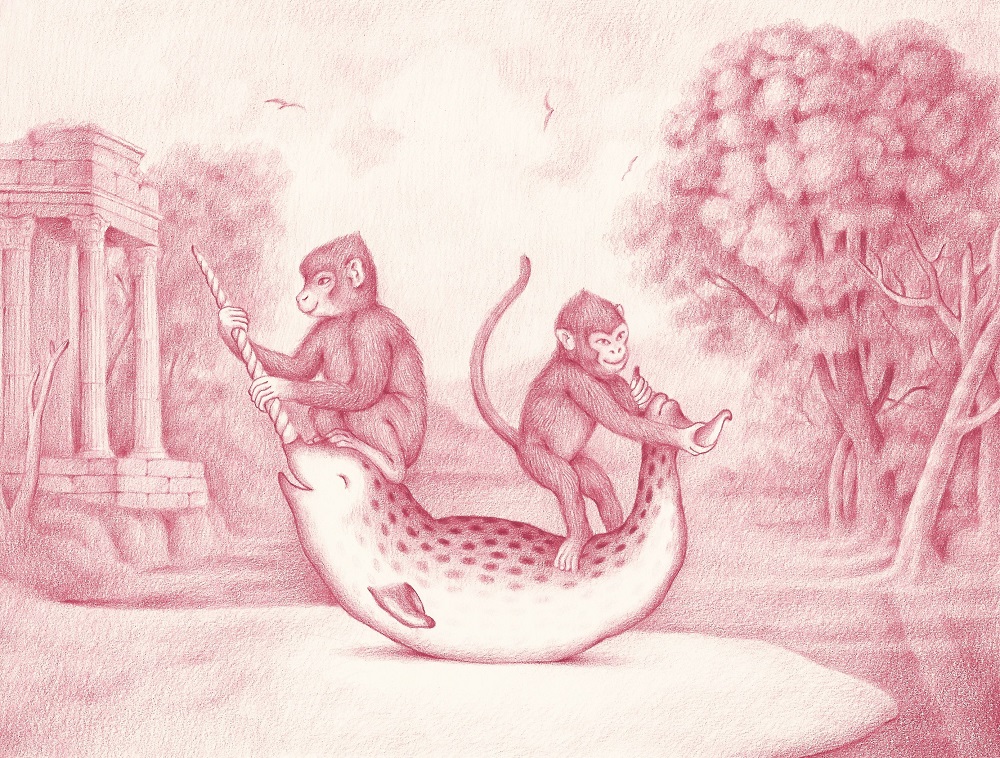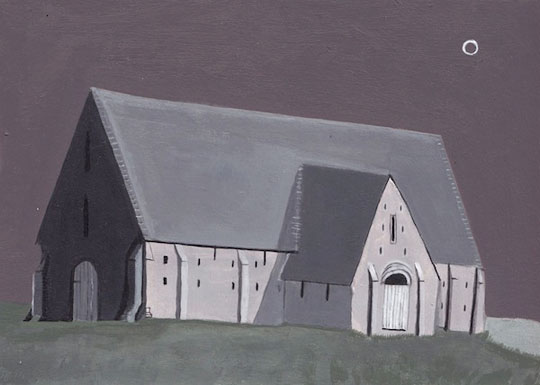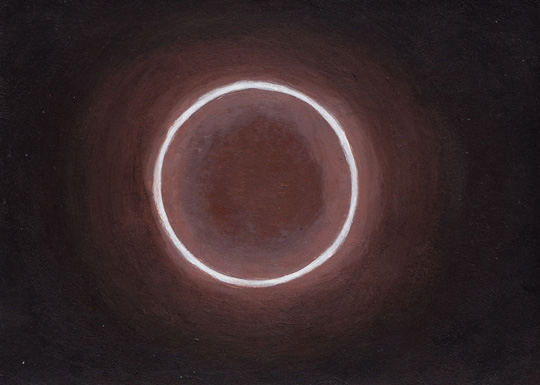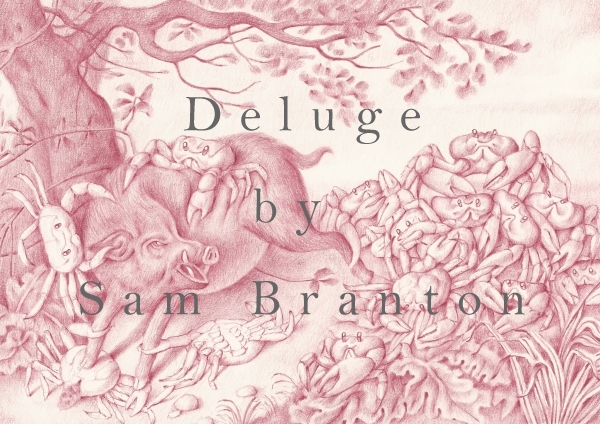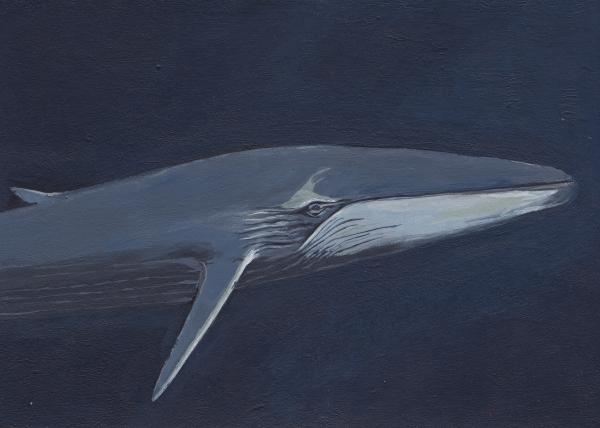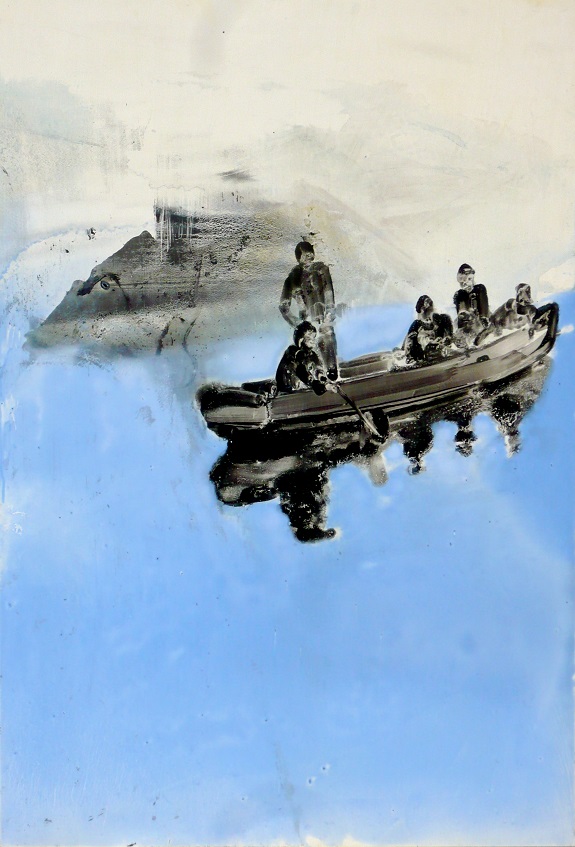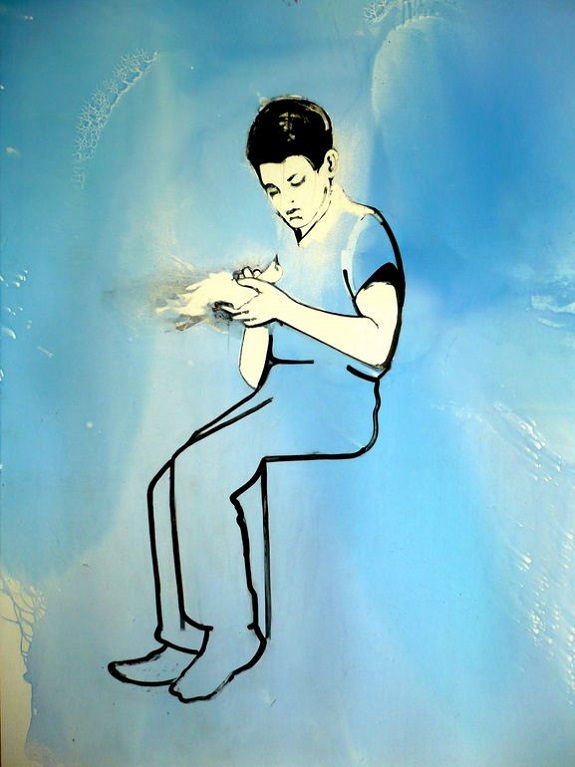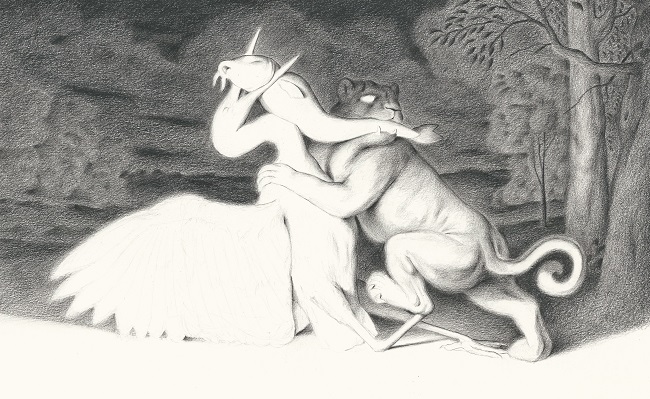
Sam Branton’s delicate pencil drawings reference the mezzoprints of English artists such as George Stubbs and John Martin. In his gentle but surreal works, Sam develops the romantic and exotic themes of his source materials, presenting fantastical animals in much the same way as Stubbs depicted Australian fauna, but with the dramatic lighting of Martin’s landscapes.
As he often works in groups of drawings, Sam then produces his series as a book, crossing the line back into the realm of print from yet another angle. In this way Sam plays with the idea of the drawing & print as a connoisseur’s reference material, albeit in the context of an imagined world of surreal absurdity.
Makers of Marks
James Freeman Gallery
08/03/2018 – 31/03/2018
Drawing and printmaking have much shared history and enjoy a deeply interwoven relationship, but even so, contemporary artists still find new ways of making them play off each other. In ‘Makers of Marks’ at the James Freeman Gallery, three artists who experiment with this relationship against a background of classical references: Daniel Hosego, Sam Branton and Jon Braley. Continue reading “Makers of Marks
James Freeman Gallery”
